Yesterday, I ventured to Kananaskis Country in search of some autumn colour to photograph. My first stop was the Highwood Pass, 100 km. from home. The Highwood Pass is known for being the highest point on any paved road in the province of Alberta at an elevation of 7,239 feet (2,206 metres). It’s also known as a good place to find grizzly bears. I’ve had my share of success in finding and photographing them there. But not today, no sign of the critters. I wasn’t concerned since my primary mission was fall colour and more specifically larch trees. As you can see from the first photograph, the larches were a brilliant orange, in contrast to the green of their neighbouring pines and spruce. Like those evergreens, the larch (known in other parts of Canada as a tamarack) is a coniferous tree but unlike those conifers, it turns colour in the autumn and looses its needles. It’s a conifer but not an evergreen. The larch thrives at higher altitudes and there are many in this area, accessible from the parking area at the Pass. In most other areas, it is necessary to hike to these elevations to get a close-up view. As you can see, the shrubbery (green in summer) has changed to its autumn colours. This afternoon’s temperature at the Pass was a balmy 19 deg C (66 deg F); overnight temperatures at this altitude would be close to freezing. The Highwood Pass closes for the winter in another three weeks; it would not be surprising for this scene to be covered in snow by then.
I used a blue/gold polarizing filter to emphasize the bright orange of the larch trees. This filter is a combination polarizer that colorizes reflective highlights in a scene, either metallic blue or yellow/gold while adding an overall warm color cast to the whole photo. The variation is achieved by rotating the polarizing element, mounted between a coloured, static filter and the camera lens. Colour variation is very sensitive to rotation of the polarizing element and it can be difficult to get a pleasing result. Like all polarizing filters, this filter works best when the camera is directed at a 90 degree angle to the direction of the sunlight. That was the case for this photograph and further, I was shaded from direct sunlight by the ridge to my right. That seemed to work and I’m pleased with the result.
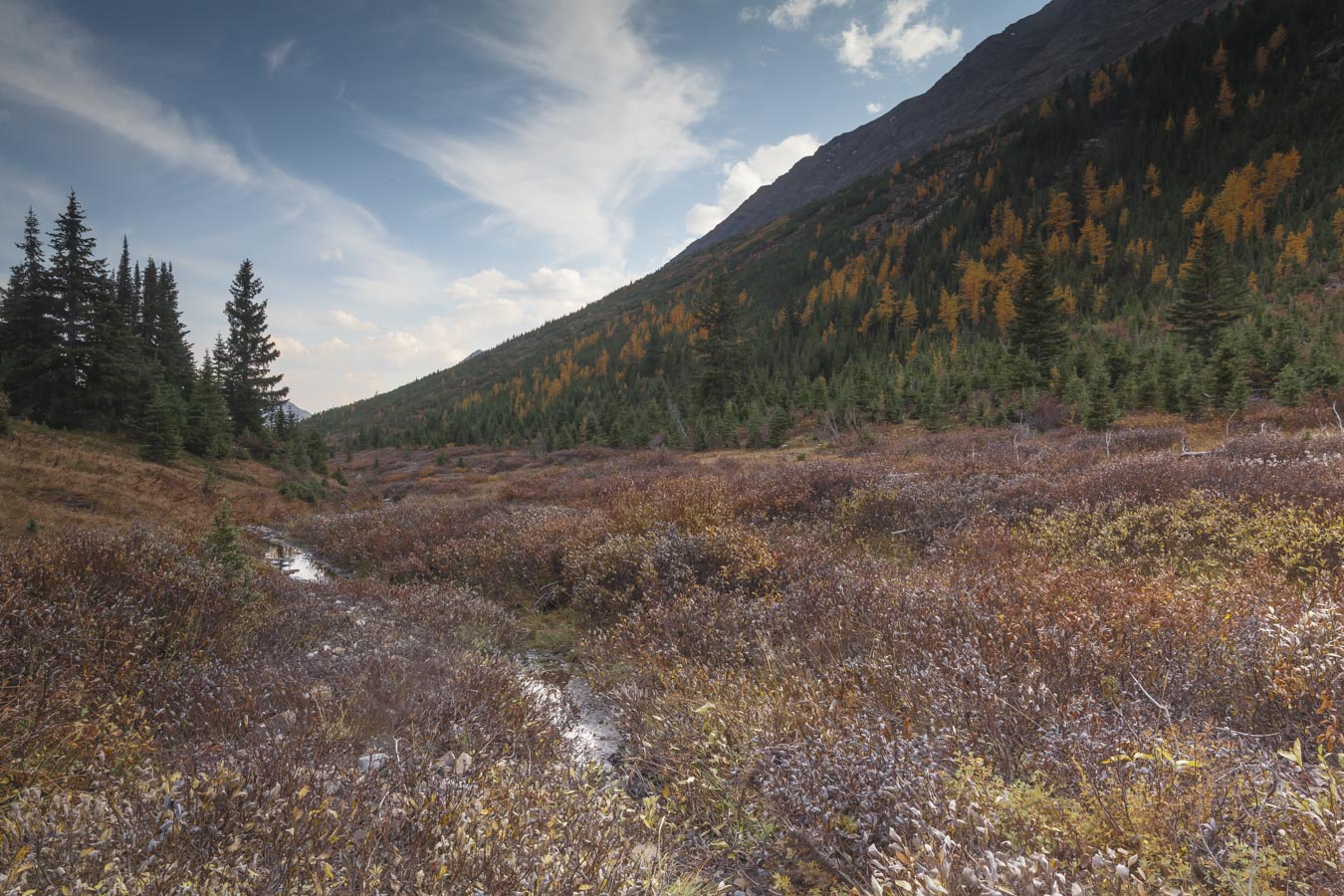
I took this photograph looking east from the parking area at the pass. The closest peak, on the far left is Storm Mountain, followed by Mist Mountain in the middle of the scene and Mount Lipsett, the most distant. Much of the area is in the shadow of Mount Pocaterra to my right, but you can see some larch trees brightly illuminated just across the highway on the left. I used a warming, circular polarizer for this picture. It works much like your polaroid sunglasses and in addition, enhances the warm colours (red, orange and yellow).
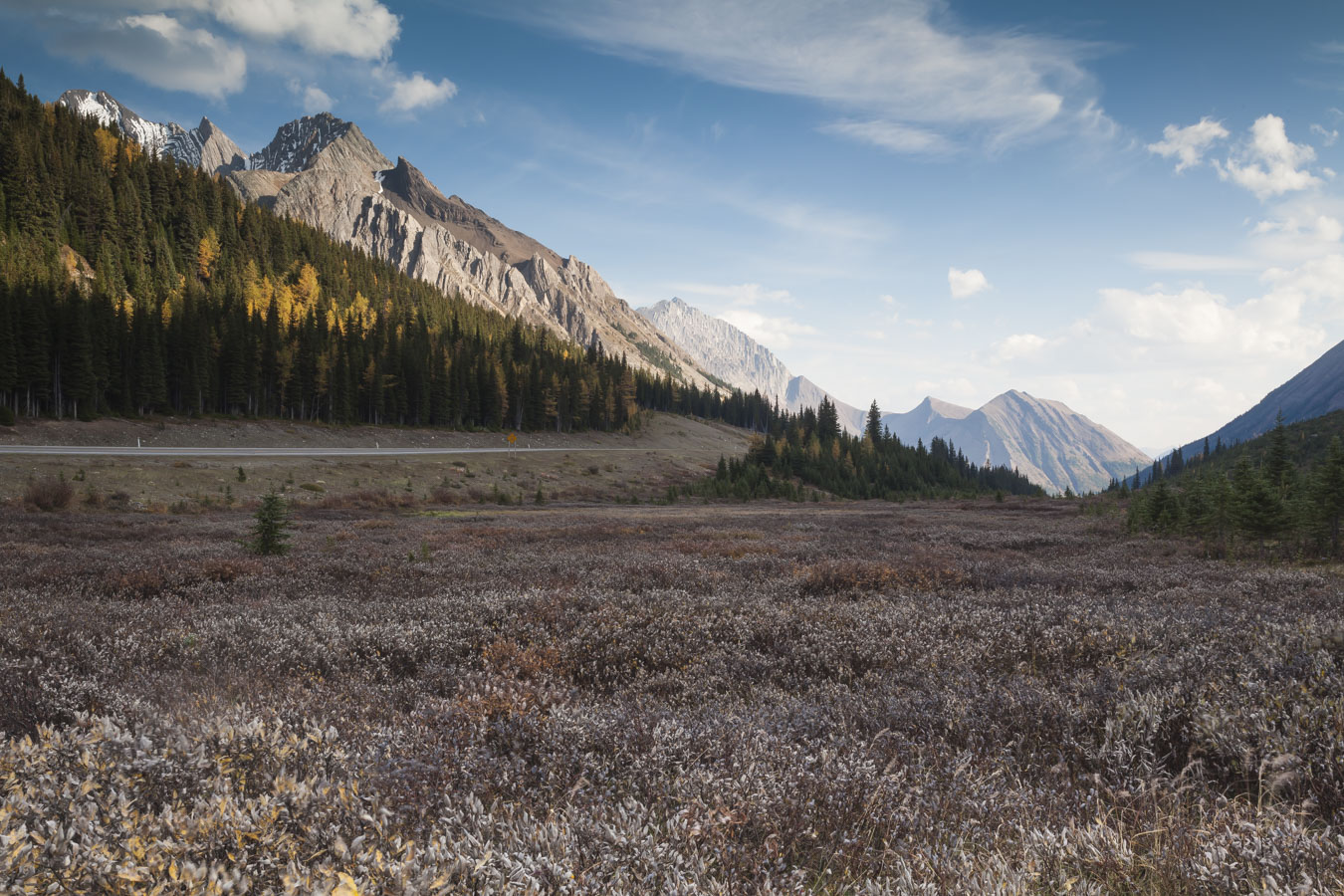
I left the area of the Highwood Pass, descending in the direction home. I soon left the larches behind, but they were replaced by the yellow/orange/gold of the aspen leaves. My next stop was at the entrance to King Canyon, looking east toward Mount Blane. I used to go down a road into the canyon and take photographs further upstream on King Creek, which you see in the foreground of the picture. Last year’s epic flood brought down enormous quantities of rock and trees, completely devastating the landscape just beyond the trees you see in the middle of the scene. It doesn’t photograph well and so I’ve chosen to take this longer view from where the creek crosses the highway. Not bad.
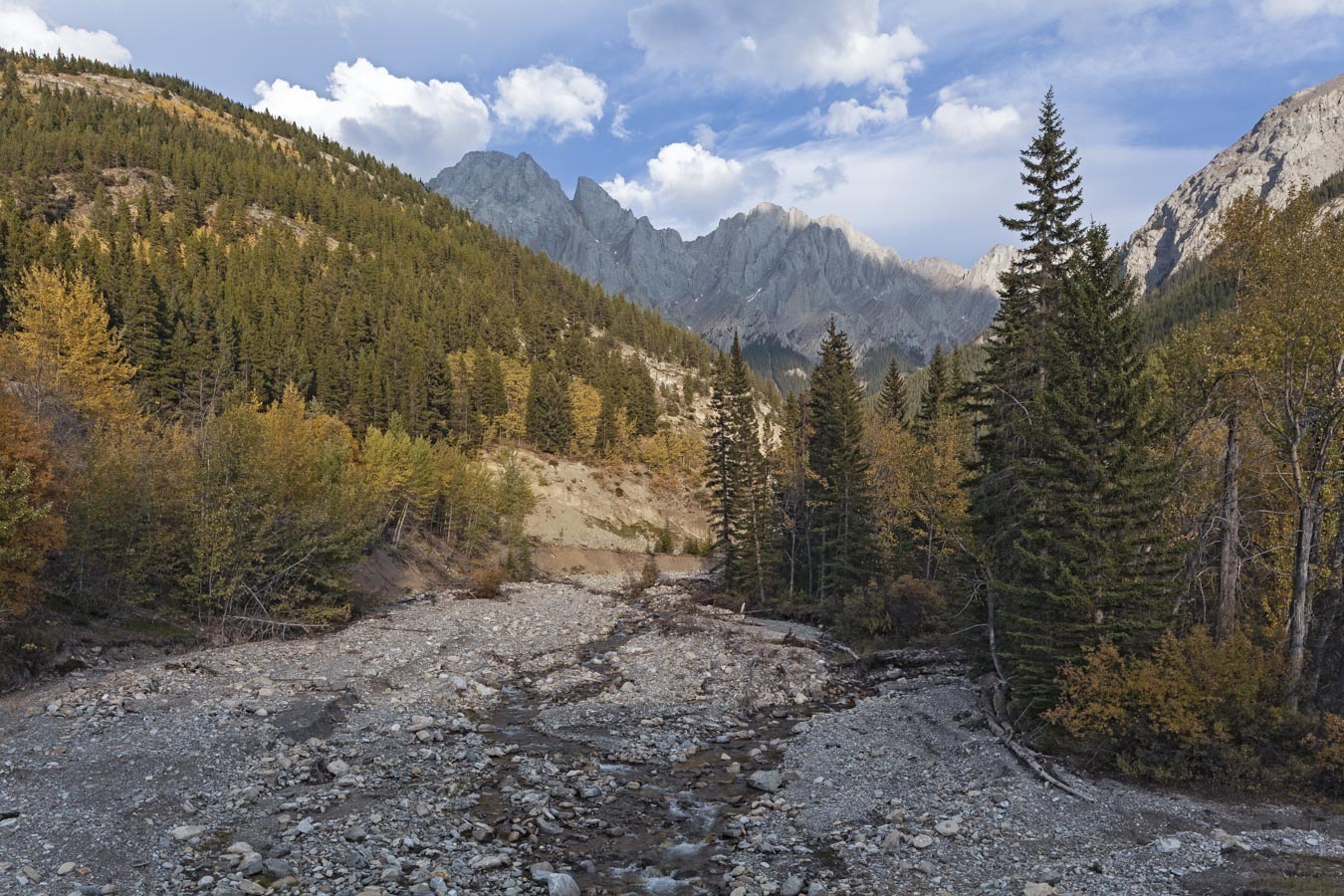
While I was there, I took a couple more pictures looking north along King Creek Ridge which you see on the right side of the next photograph. I was really after the colourful aspens in the foreground.
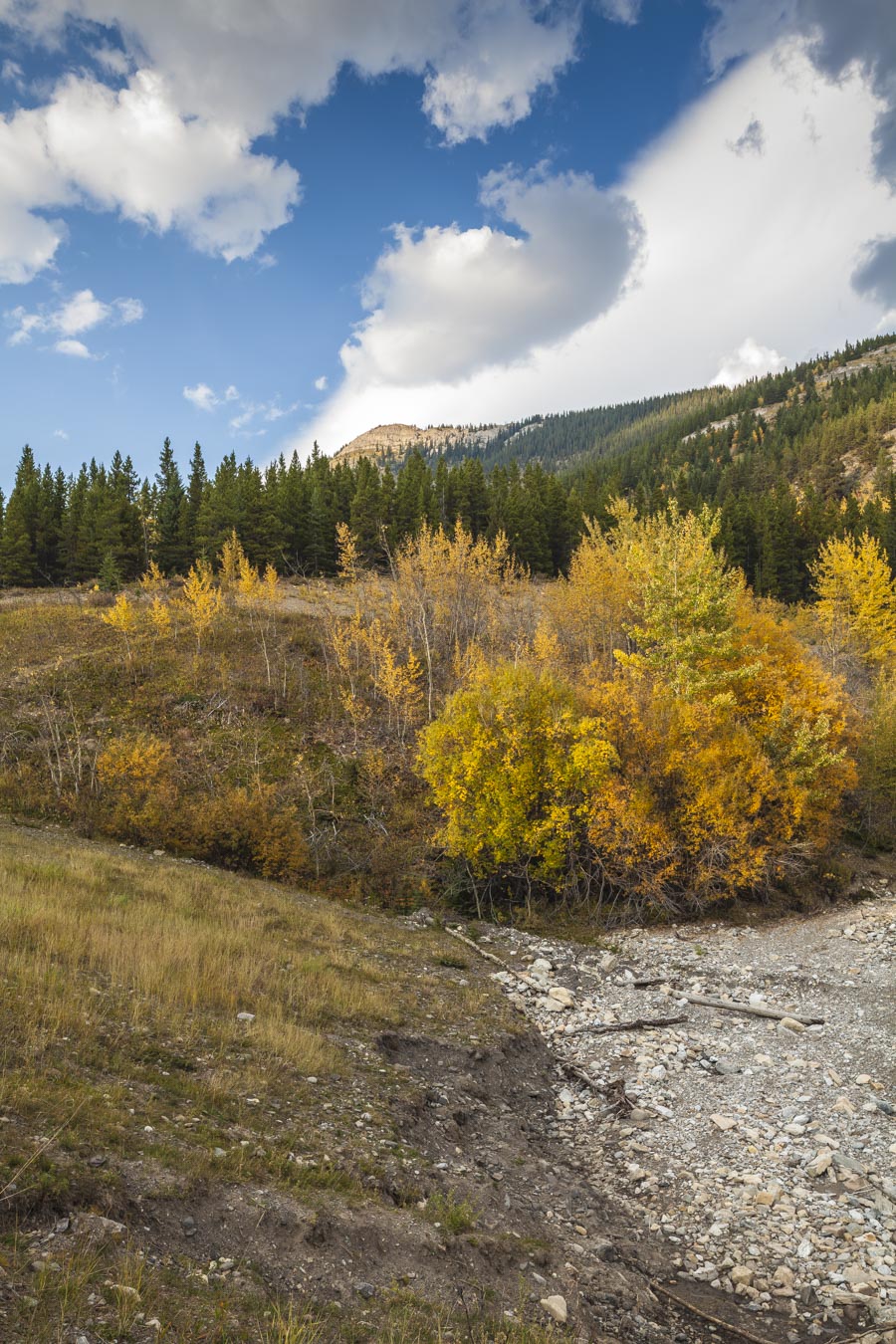
My final picture is a wider angle view of this same ridge, taken from a little higher position, further back. This picture shows much more of King Creek Ridge and includes Mount Blane in the background.
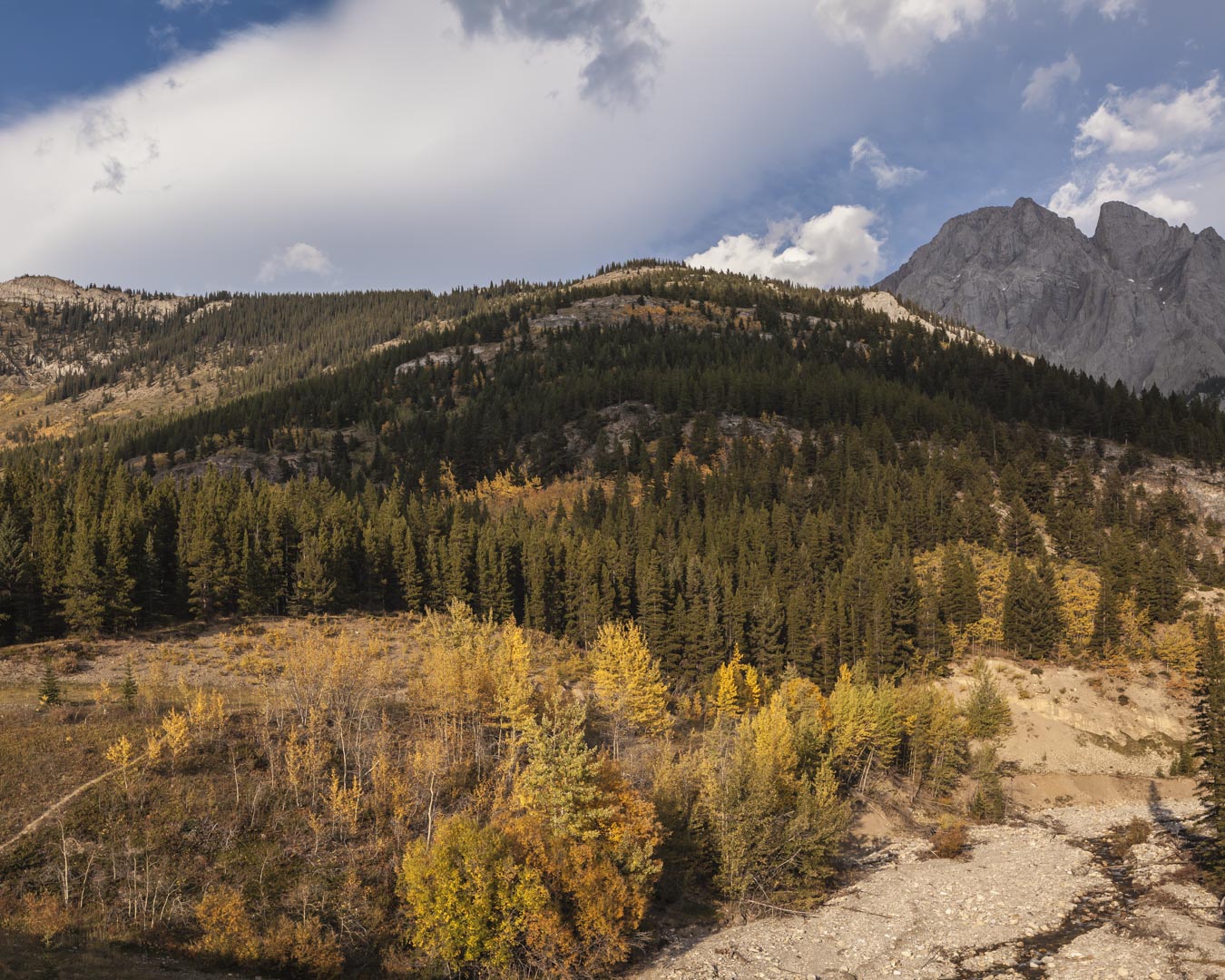
One concluding comment. I was fortunate that the sky and the clouds were so amazing, the perfect complement to the brilliant, warm colours of autumn.
